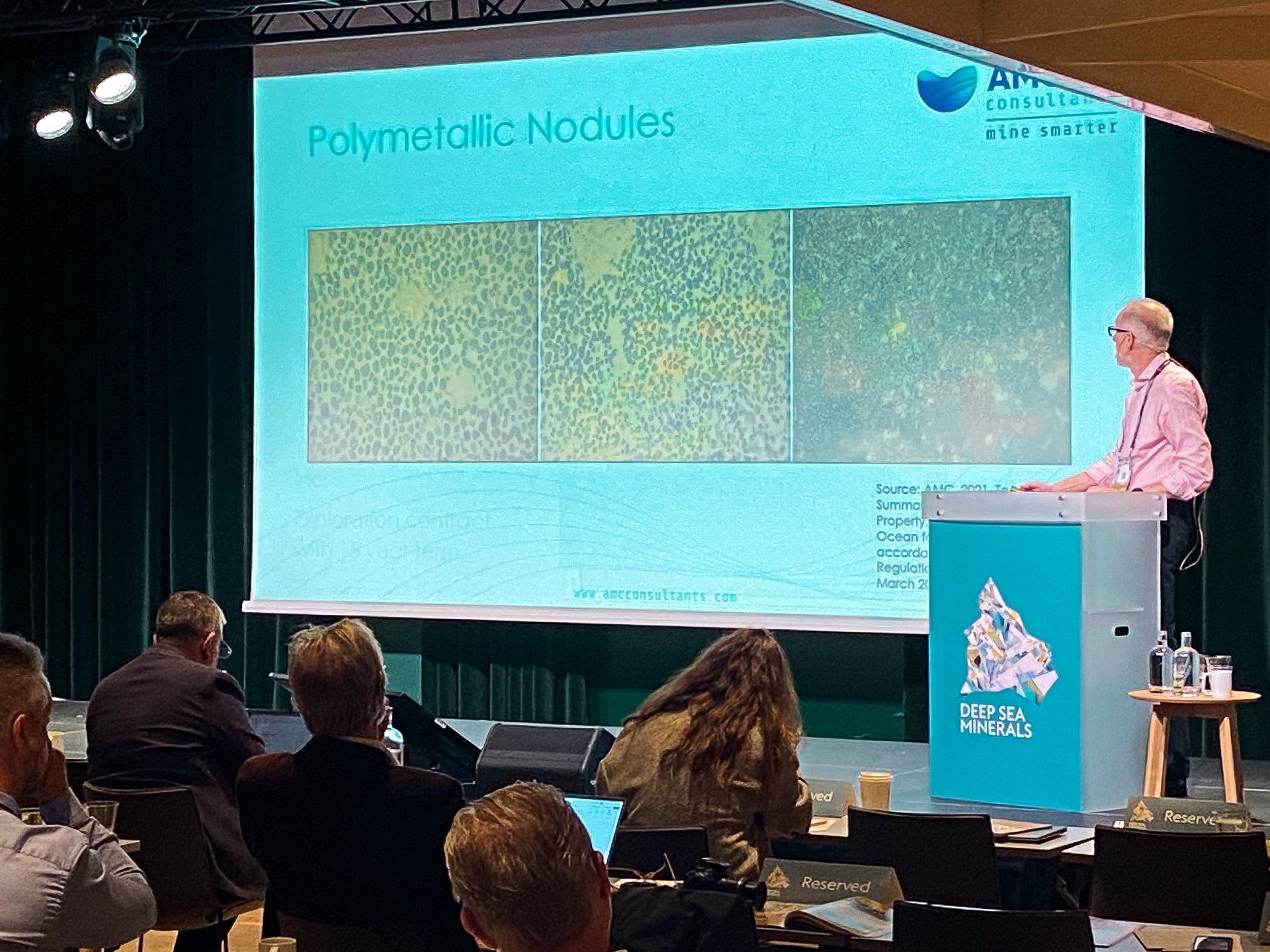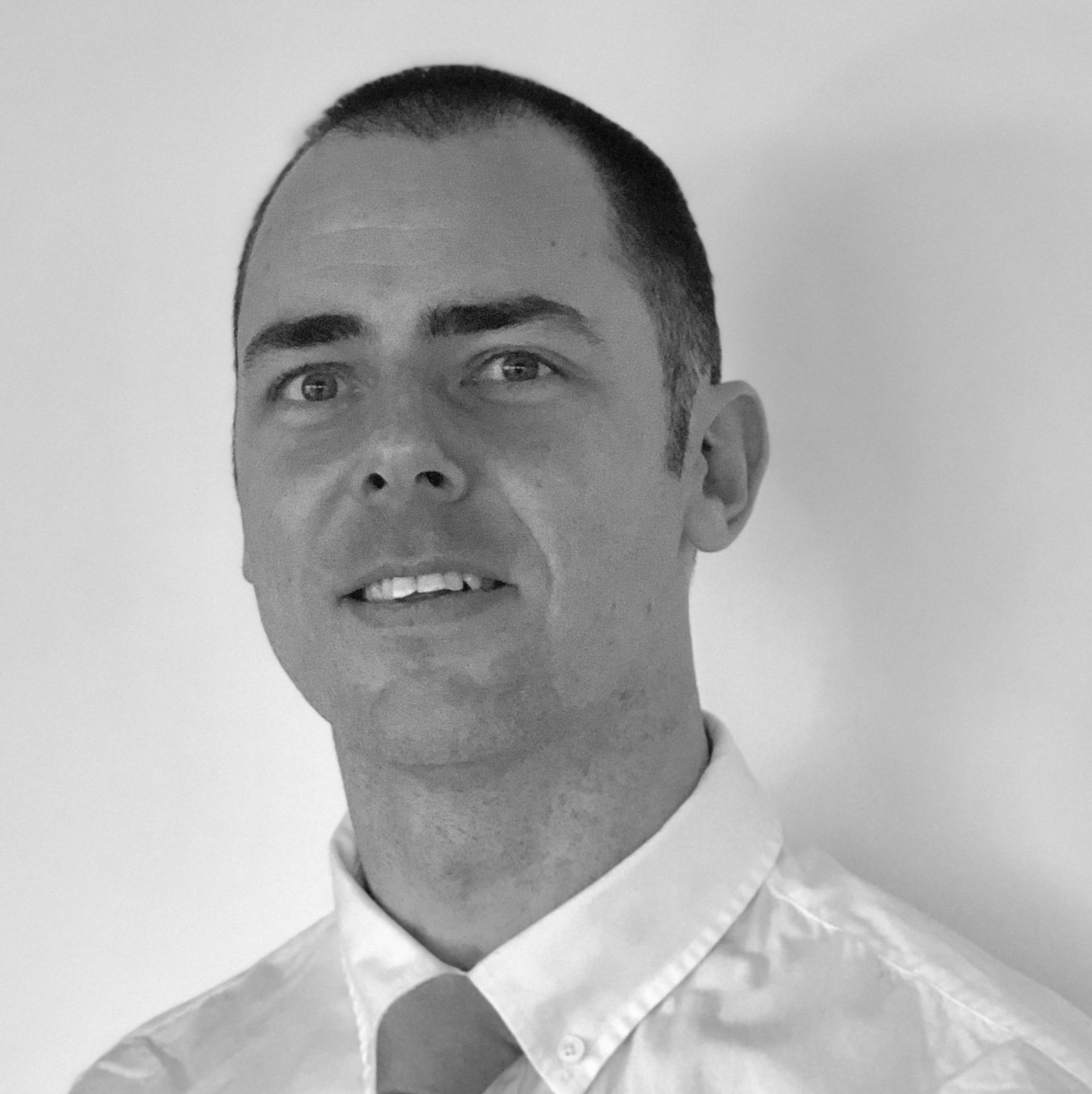Deep Sea Minerals conference, Bergen, 26-27 October 2022
Deep sea minerals have become a focus of government and private sector interest in Norway, as Norwegians prepare to transition from oil and gas production to a decarbonized economy. There is recognition that a new deep sea minerals industry could not only provide jobs and revenue but could also play an important role in ensuring that the world has sufficient supply of copper, nickel, and cobalt to meet the needs of electrification for a green economy.
Nick Szebor and Ian Lipton, AMC Principal Geologists, attended the Deep Sea Minerals conference in Bergen, Norway, in October 2022. Ian has been actively involved in the deep sea minerals sector for a number of years working on projects including the Solwara sea floor massive sulphide deposit and polymetallic nodules in the Clarion Clipperton Zone (CCZ). The deep sea minerals sector has also presented an opportunity for Nick to go full circle and incorporate his degree in Ocean Science with his work as a geologist in the mining sector.
An enthusiastic crowd of marine technologists, marine scientists, geologists, geophysicists, and representatives from oil and gas companies and new start-ups listened to two days of presentations on the exploration and mining potential for massive sulphides on the Norwegian continental shelf, and manganese cobalt crusts and polymetallic nodules in the Pacific Ocean. The importance of minimizing the impact on the marine environment during extraction of minerals was also a consistent theme throughout the conference.


Ian Lipton presented a paper on the journey from Mineral Resources to Mineral/Ore Reserves for the NORI D polymetallic nodule project. AMC has been supporting the project since 2018, through initial assessment and into the prefeasibility phase. The paper considered some of the unique issues that must be accommodated in mine planning, including the management of the sediment plume that will be generated from the nodule collector, and optimizing the mining path within the constraints of variations in nodule type, seafloor topography, and seasonal currents.
Terrestrial mining has a history of several thousand years and mechanized mining has been practiced for about a hundred years. Methods and equipment are tried and tested, and operating parameters are well-known. AMC regularly benchmarks cost estimates for terrestrial mines against a database of other mines with comparable geology and operating environments.
In contrast, there are currently no examples of commercial-scale deep sea mines that can be used as benchmarks. Estimates of productivities and costs must therefore be constructed methodically from first principles and draw on operating experience from marine engineering and operations in other well-established industries such as off-shore diamond mining, deep sea trenching, and the oil and gas sector.
Ian also spoke briefly about the pilot test that The Metals Company (TMC) was executing at NORI D, and nearing completion during the conference. TMC has announced the successful recovery of polymetallic nodules using a self-propelled crawler and an airlift riser system from 4,500 m depth; the first time this has been done since the 1970s. AMC has been advising TMC about data collection during the pilot test and will be using the data the test has generated in the next round of mine planning.
On the second day of the conference, the Norwegian government released an impact assessment of deep sea mineral exploration and extraction on the Norwegian continental shelf, including the proposed regulatory framework for licensing such activities. Announcing the start of a three-month public consultation period, the State Secretary noted that although recycling will be important, it is likely that mining will still be required to provide the metals that are needed for a low-carbon society.
The conference was a great success and highlighted the increasing activity and interest in the marine minerals space. AMC has been actively involved in supporting companies looking to develop deep sea marine mineral projects, and we look forward to continuing to play a leading role in this important new industry.
Meet the team at Deep Sea Minerals
Nicholas Szebor
Principal Geologist
Nick has 14 years of experience within the mineral industry working in roles including consultancy and production. His experience covers a range of commodities, geological settings, exploration and production environments, including underground and open-pit operations. This experience has been obtained across the mining lifecycle from early-stage exploration to production and mine closure. Nick has carried out mineral resource estimates to international reporting codes including JORC, CIM (NI 43-101), and SAMREC.
Ian Lipton
Principal Geometallurgist
Ian has more than 40 years of experience in mining geology, resource evaluation, and exploration. Ian’s mining expertise includes resource estimation, feasibility studies, technical audits and reviews, due diligence studies, Independent Technical Specialist Reports, and valuations. Ian completed the first publicly reported estimate for a seafloor massive sulphide deposit (Solwara 1, Papua New Guinea) and has been a mineral resource consultant for a number of other seafloor projects, including polymetallic nodule projects in the northeast Pacific Ocean and sea floor sediments in the Black Sea.
Subscribe for the latest news & events
Contact Details
Useful Links
News & Insights


